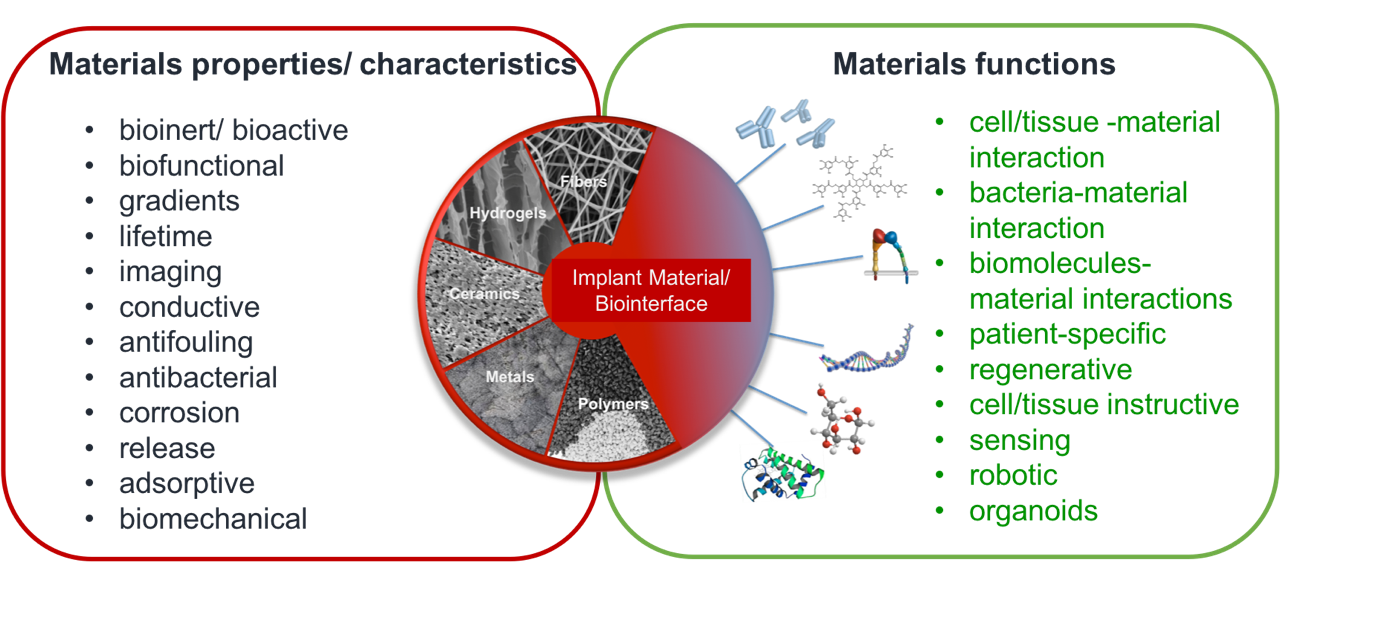Implants and Biointerfaces
Advances in science, technology and medicine have increased our life expectancy. Aging naturally brings a progressive loss of physical capabilities and is associated with degenerative diseases and increased incidences of trauma. The focus of the core area ‘Implants and Biointerfaces’ is on design, development and engineering of implantable (bio)materials for tissue repair, tissue regeneration and tissue engineering. Concepts include bioactive, bioresponsive and bioinstructive materials, which promote enhancement of tissue repair and function.
Anticipating the needs of clinics and industry, highly interdisciplinary approaches for regenerative and health supporting material concepts are exploited. Topics addressed in the core area include patient-specific implants created through advanced manufacturing, online monitoring sensors that combine physiological readouts with responsive materials, modification of material surfaces to obtain bioactive, antibacterial or bioinstructive functions, soft material concepts with appropriate biological and biomechanical properties supporting tissue healing, to name a few.

Example: Rapid and long-term stable tissue integration is a key requirement for many implants. For dental implants, not only good osseointegration, but also a tight soft tissue seal to prevent bacterial infection, inflammation and subsequent bone loss is required. While physicochemical properties of implant surfaces are known to govern these processes, evaluating new implant designs is hampered by the limited availability of relevant model systems (Fig.). We develop predictive in vitro hard and soft tissue models to reduce and ideally replace animal experiments. Furthermore, we develop – often in long-term collaboration with key industrial partners – novel implant surfaces with an enhanced biological response.



-
Share
